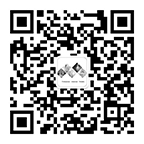Happy Chinese New Year!
TIME: 2024-03-01
People in North China are used to posting paper-cut on their windows. When sticking the window decoration paper-cuts, people paste on the door large red Chinese character “fu”. A red "fu" means good luck and fortune, so it is customary to post "fu" on doors or walls on auspicious occasions such as wedding and festivals.
During the Spring Festival,every family pastes the Spring Festival couplets on their doors to express sincere blessings and good wishes.
Shousui" means to stay up late or all night on New Year's Eve. After the great dinner, families sit together and chat happily to wait for the New Year’s arrival.
Spring Festival is a time for family reunion. The New Year`s Feast is "a must" banquet with all the family members getting together. The food eaten on the New Year Eve banquet varies according to regions. In south China, It is customary to eat "niangao" (New Year cake made of glutinous rice flour) because as a homophone, niangao means "higher and higher every year". In the north, the traditional food for the feast is "Jiaozi" or dumplings shaped like a crescent moon.
It is the money given to kids from their parents and grandparents as New Year gift. The money is believed to bring good luck and ward off monsters; hence the name "lucky money". Parents and grandparents put money in small, especially-made red envelopes beforehand, and give the red envelopes to their kids after the New Year`s Feast or when children come to pay New Year calls. They choose to put the money in red envelopes because Chinese people think red is a lucky color. They want to give their children both the lucky money and the lucky color.
 Tel: +0532-80903675
Tel: +0532-80903675 E-mail: sophia@crownchemical.com
E-mail: sophia@crownchemical.com 中文版
中文版

 Add : 35th Floor, Qingdao International Finance Center, No.59.Middle HongKong Road, Qingdao, China 266071
Add : 35th Floor, Qingdao International Finance Center, No.59.Middle HongKong Road, Qingdao, China 266071 Tel : +0532-80903675
Tel : +0532-80903675 Fax : +86-532-8667 5300
Fax : +86-532-8667 5300 E-mail :sophia@crownchemical.com
E-mail :sophia@crownchemical.com